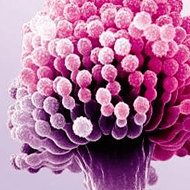Phospholipid Powder Quotes, sources in aquatic animal feed
Time:2025-04-14The sources of phospholipids in aquatic animal feeds mainly include the following categories:
I. Animal-derived Phospholipids
Egg Yolk Phospholipids: Egg yolk is rich in phospholipids, and the main components are lecithin and cephalin. Egg yolk phospholipids have good emulsifying properties and biological activities, and are easily digested and absorbed by aquatic animals, making them a high-quality source of phospholipids in aquatic feeds. However, due to the limited sources of egg yolk and its high cost, it is usually used as a high-quality additive in small amounts in large-scale aquatic breeding feeds.
Fish Meal: Fish meal is an important protein source for aquatic feeds and also contains a certain amount of phospholipids. The phospholipid content varies among different types of fish meal, generally around 2% - 10%. The phospholipids in fish meal are closely bound to nutrients such as proteins and fats. Some phospholipids will be damaged during the processing, but it can still provide a certain amount of phospholipid nutrition for aquatic animals.
Fish Oil: Fish oil is an oil extracted from fish fat. In addition to being rich in unsaturated fatty acids, it also contains a small amount of phospholipids. The phospholipids in fish oil are mainly phosphatidylcholine and phosphatidylethanolamine, etc., and have high biological activities. Adding fish oil to aquatic feeds can not only provide essential fatty acids but also supplement a certain amount of phospholipids.
II. Plant-derived Phospholipids
Soybean Phospholipids: Soybean phospholipids are by-products obtained during the refining process of soybean oil and are one of the most commonly used sources of phospholipids in aquatic feeds. It is mainly composed of lecithin, cephalin, phosphatidylinositol, etc., and is rich in unsaturated fatty acids, with good emulsifying and antioxidant properties. Soybean phospholipids can not only provide phospholipid nutrition for aquatic animals but also improve the processing performance and palatability of the feed, and enhance the stability of the feed in water.
Rapeseed Phospholipids: Rapeseed phospholipids are by-products of the refining process of rapeseed oil. Its phospholipid composition is similar to that of soybean phospholipids, but it contains more phosphatidylethanolamine. Rapeseed phospholipids have a relatively low price and also have a certain application in aquatic feeds. However, since rapeseed contains some anti-nutritional factors, such as glucosinolates, etc., attention should be paid to its impact on the growth and health of aquatic animals when using rapeseed phospholipids.
Other Plant Phospholipids: In addition to soybean phospholipids and rapeseed phospholipids, there are also some other plant-derived phospholipids that can be used in aquatic animal feeds, such as sunflower phospholipids and corn phospholipids. The phospholipid content and composition of these plant phospholipids have their own characteristics, and their application effects in aquatic feeds also vary. However, due to reasons such as production volume and cost, their application scope is relatively narrow.
III. Microorganism-derived Phospholipids
Yeast Phospholipids: Yeast cells contain a certain amount of phospholipids, mainly phosphatidylcholine, phosphatidylethanolamine, and phosphatidylinositol, etc. Yeast phospholipids have good biological activities and nutritional values, and yeast is easy to culture and mass-produce. Therefore, the application of yeast phospholipids in aquatic feeds has gradually attracted attention. In addition, during the yeast fermentation process, some other bioactive substances can also be produced, such as nucleotides, vitamins, etc. These substances work synergistically with phospholipids to help improve the growth performance and immunity of aquatic animals.
Mold Phospholipids: Certain molds can also synthesize phospholipids, such as Aspergillus oryzae and Aspergillus niger. The fatty acid composition and types of phospholipids of mold phospholipids are similar to those of plant phospholipids, and they have good emulsifying properties and nutritional values. Producing mold phospholipids through fermentation technology can achieve large-scale industrial production, providing a stable source of phospholipids for aquatic feeds. However, when using mold phospholipids, attention should be paid to the toxins and other harmful substances that may be produced during the mold fermentation process to ensure the safety of the product.


 CN
CN





